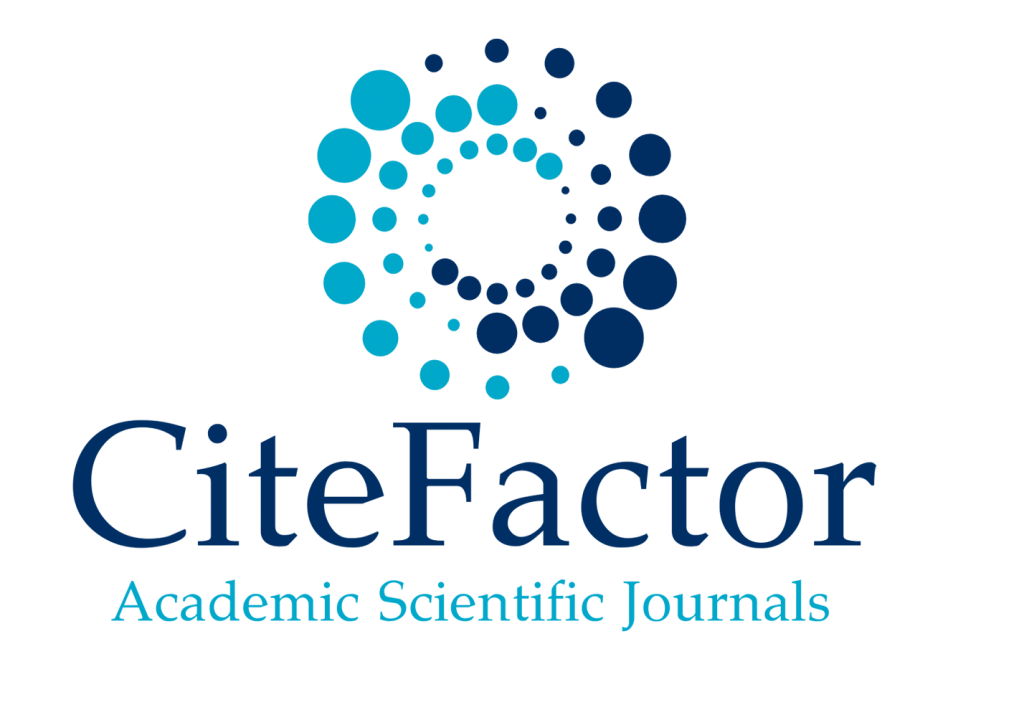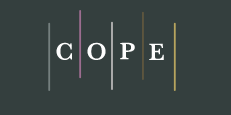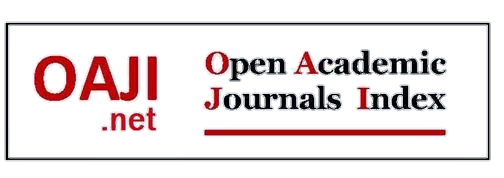Water Tariff Structures and Access to Clean Water. A Case Study of Lira City, Uganda
1,2Acen Vicky, 1Anthony M Olyanga, 1Muhire Francis
1Faculty of Economics, Energy and Management Sciences Makerere University Business School, Plot 21A New Portbell Road, Kampala, Uganda
2Wáter Utility Regulation Department Ministry of Water and Environment, Portbell Road, Kampala, Uganda
https://doi.org/10.47191/jefms/v8-i4-04
ABSTRACT:
This study investigates the influence of water tariffs, willingness to pay, and household income on access to clean water in Lira City, Uganda. A mixed-method approach was employed, utilizing both quantitative and qualitative data collection methods. The Quantitative data was gathered through a structured questionnaire survey, while qualitative insights were obtained from focus group discussions (FGDs) and key informant interviews. The questionnaire survey captured responses from a diverse cross-section of households, assessing their perceptions of water pricing, accessibility, and service quality. FGDs and key informant interviews provided in-depth perspectives from community leaders, public stand or yard tap attendants, and water management committee members, enriching the understanding of the contextual dynamics influencing water access. The findings reveal a significant relationship between water tariff levels and access to clean water, with affordability of water tariffs emerging as a critical factor. While the majority of households found current tariffs manageable, a substantial portion reported difficulties in affording water services, particularly among lower-income groups. The study also highlights a strong willingness among residents to pay more for reliable and higher-quality water services, dependent on improved proximity and quality service. These results highlight the importance of policy interventions that include targeted subsidies to improve water accessibility for vulnerable populations and enhance efficiency in service delivery. They also emphasize the necessity for strong regulatory frameworks, increased transparency, and active community participation in the tariff determination processes, which will help reduce inequalities.
KEYWORDS:
Water Tariff, Water Access, Lira, Uganda
REFERENCES:
1) African Development Bank (2022). Water Financing and Governance, 2022
2) Amin, Z. (2005). An introduction to measurement validity and reliability. Middle-East Journal of Scientific Research, 1(2), 55-60.
3) Amoah, V., Asante, F., & Dzator, VA. (2017). The effect of water tariff increases on water consumption and health outcomes in Ghana. Water Resources Management, 31(8), 2251-2264.
4) Asian Development Bank (2022). Water Tariff Reforms in Developing Asia, 2022
5) Basu, S.H., Shizuka Hashimoto. 2017. Determinant of water consumption: A Cross-sectional Household study in Drought Prone Rural India. International Journal of Disaster Risk Reduction, 24, 373-383.
6) Berkes, F., Colding, J., & Folke, C. (2003). Navigating Social-Ecological Systems: Building Resilience for Complexity and Change. Cambridge University Press.
7) Biswas, AK. (2008). Integrated Water Resources Management: A Reassessment. London: Earthscan.
8) Biswas, AK. (2008). Integrated Water Resources Management: A Reassessment - Water Policy, Volume 10 Supplement 1. World Scientific.
9) Boakye-Ansah, AS., & Adarkwa, KK. (2019). Public perception and willingness to pay for water resources management: A case study of the Tano Offin Forest Reserve, Ghana. Journal of Cleaner Production, 220, 499-510.
10) Boateng, D., Amoako, C., & Asante, F. (2019). Urban water tariff structure and affordability: The case of Kumasi, Ghana. Utilities Policy, 61, 100965.
11) Boland, C., & Kirkwood, CS. (2007). Affordability and the demand for domestic water in developing countries. Environmental and Resource Economics, 37(4), 247-260.
12) Brown, C., & Jones, N. (2020). Understanding changes in willingness to pay for water supply improvements: evidence from Uganda. Water Supply, 20(8), 1455-1467.
13) Brown, RC., Farthing, D., & Foster, V. (2017). Access to drinking water and sanitation in urban areas: an analysis of 56 developing countries. Environmental and Development Economics, 22(5), 629-653.
14) Cochran, WG. (1997). Sampling Techniques (3rd ed) John Wiley & Sons, Inc.
15) Creswell, JW. (2001). Research design: Qualitative, quantitative, and mixed methods approaches.(1st ed). Sage Publications.
16) Creswell, JW. (2009). Research design: Qualitative, quantitative, and mixed methods approaches (3rd ed). Sage Publications.
17) Cronin, A.A., Odagiri, M., Arsyad, B., Nuryetti, M.T., Amannullah, G., Santoso, H., Nasution, N. 2017. Piloting Water Quality Testing Coupled With A National Socioeconomic Survey In Yogyakarta Province, Indonesia, Towards Tracking Sustainable Development Goal 6. International Journal of Hygiene and Environmental Health, 1-11.
18) Dalhusein, J.M., Florax, R.J.G.M., De Groot, H.L.F., Nijkamp, P. 2003. Price and Income Elasticity of Urban Residential Water Demand. Land Economics, 79, 292-308.
19) Deutsche Gesellschaft für Internationale Zusammenarbeit (2021). Water Pricing, 2021
20) Duarte, R., Pinilla, V., Serrano, A. 2013. Is There an Environmental Kuznets Curve for Water Use. A panel smooth transition regression approach. Economic Modelling, 31, 518-527.
21) Dwamena, E., Komlavi, A., & Amoateng, P. (2021). Determinants of Urban Water Accessibilityand Water Price in Accra. Ghana. Social Sciences, 10(3), 103.
22) Foster, T., & Hope, R. (2017). Urbanization and the politics of water in the peri-urban interface: The case of Greater Accra, Ghana. World Development, 96, 481-492.
23) Gale, NK., Heath, G., Cameron, E., Rashid, S., & Redwood, S. (2013). Using the framework method for the analysis of qualitative data in multi-disciplinary health research. BMC medical research methodology, 13(1), 1-8
24) Garcia, X., & Martinez, E. (2019). Willingness to pay for improved water supply and sanitation in rural Mexico: a censored Tobit model approach. Water Resources and Economics, 31, 100112.
25) GIZ (2021). Sustainable water management in Uganda, 2021
26) Gulyani, S., & Talukdar, D. (2008). Inside Informality: The Link between Poverty, Microenterprises, and Living Conditions in Nairobi’s Slums. World Development, 36(7), 1247–1266.
27) Gunatilake, M. 2015. Drought and Household Food Security in Rural Sri Lanka. Journal Landslides, 7(2), 78-86.
28) Harvey, P., & Reed, RA. (2007). Water justice? Examining environmental justice concerns in relation to the governance of water supply in post-apartheid South Africa. Global Environmental Politics, 7(4), 75-95.
29) Haziq, P. 2017. An Empirical Analysis of Domestic Water Resources Consumption, and Located Factor in Kandahar City. Afghanistan. Journal Resources and Development, 77(2), 49-61.
30) Hope, R., & Rouse, M. (2019). Water Access and Quality in Urban Informal Settlements: A CaseStudy of Lira, Uganda. Sustainability, 11(13), 3638.
31) Hunter, J., Jaggers, P., & Rogerson, C. M. (2017). Contesting power and politics in urban water governance: lessons from Cape Town's water crisis. Environment and Urbanization, 29(2), 329-346.
32) Hutton, G., & Varughese, M. (2016). The Costs of Meeting the 2030 Sustainable Development Goal Targets on Drinking Water, Sanitation, and Hygiene. World Bank, Water Global Practice.
33) IBM Corporation. (2011). IBM SPSS Statistics for Windows, Version 20.0. Armonk, NY: IBM Corporation.
34) Johnson, P. (2020). Regulating water prices: balancing affordability and revenue generation in South Africa. Water Policy, 22(4), 692-709.
35) Jones, H., & Patel, S. (2018). Equity and water justice in the water and sanitation sector: insights from Ghana and Kenya. Development in Practice, 28(5-6), 606-621.
36) Kish, L. (1965). Survey sampling. John Wiley & Sons, 1965
37) Kohler, M., Nakangiri, N., Kyesah, L., & Agwanda, CO. (2019). Exploring local water management practices for improved water security in northern Uganda. Water Alternatives, 12(2), 399-415.
38) Komives, K., Foster, V., Halpern, J., & Wodon, Q. (2005). Water, electricity, and the poor: Who benefits from utility subsidies? World Bank Publications.
39) Li, H., & Smith, LED. (2016). Affordability and the willingness to pay for water: evidence from rural Zambia. Environmental and Resource Economics, 63(1), 181-207.
40) Lira City Council (2022). Lira City Water Master Plan, 2022
41) Lohr, SL. (2010). Sampling: Design and analysis (2nd ed.). Cengage Learning.
42) MWE (2019). Sector Performance Report, 2019.
43) MWE (2018). Sector Performance Report, 2018
44) MWE (2017). Uganda Water Atlas, 2017
45) Mukungu, EW., Ochola, CA., & Otieno, FA. (2017). Water Accessibility and Social Economic Factors in Urban Slums: A Case of Manyatta-B Sub-Location, Kisumu County, Kenya. Journal of Environment and Earth Science, 7(9), 1-12.
46) Nyanza, E.C., Jahanpour, O., Hatfield, J.M., Van der Meer, F., Allen-Scott. L., Orsel, K., Bastien, S. 2018. Access and Utilization of Water and Sanitation Facilities and Their Determinants Among Pastoralists in The Rural Areas of Northern Tanzania. Tanzania Journal of Health Research, 20(1).
47) National Water and Sewerage Corporation (NWSC). (2023). Tariffs and Fees. https://www.nwsc.co.ug/tariff-guide/
48) Nguyen-Thanh, V., Bin, LT., & Hensler, R. (2015). Cultural values and household willingness to pay for improved water supply and sanitation services in rural Vietnam. Water resources and economics, 11, 1-18.
49) Ostrom, E. (1990). Governing the commons: the evolution of institutions for collective action. Cambridge University Press.
50) Patton, MQ. (2002). Qualitative research & evaluation methods. Sage Publications.
51) Smiley, S. L. (2016). Water availability and reliability in Dar es Salaam, Tanzania. Journal of Urban Affairs, 38(5), 654-668.
52) Smith, LED., Sim, Y., & Moore, PH. (2019). The impact of water tariffs on service quality and affordability in Kenya. Water International, 44(3), 289-305.
53) Tumwesigye, NM., Namutebi, A., & Tumwine, JK. (2012). Rural and Urban Differences in Water Accessibility in Mukono District, Uganda: The Implications of an Evolving Society. Health and Place, 18(4), 877-885.
54) Uganda Water Supply Atlas (2023). Lira District.
55) UNICEF. (2019). Water, Sanitation and Hygiene (WASH) in Uganda. https://www.unicef.org/uganda/what-we-do/wash
56) United Nations. (2015). Transforming our world: the 2030 Agenda for Sustainable Development https://sdgs.un.org/2030agenda. Retrieved from https://sustainabledevelopment.un.org/content/documents/7891transforming our world the 2030 agenda for sustainable development.pdf
57) UN-Water (2015). The United Nations World Water Development Report, 2015
58) Walker, P., & Day, J. (2008). Justice and the environment: a conceptual framework. Development and Change, 39(4), 651-676.
59) Wang, Y., & Zhang, W. (2017). Dynamic water pricing for a single water-dependent industry considering water pollution in a decentralized economic system. Environmental Engineering Science, 33(8), 1403-1412.
60) Water Research Commission (2020). Research and Development Strategy 2020–2025.
61) Water Research Commission (2020). Water, sanitation and hygiene (WASH) in Africa: Challenges and opportunities, 2020
62) White, GF., & Johnson, CM. (2018). Affordability and the politics of water supply: rethinking water justice through the lens of the socio-cultural aspects of affordability. Water Alternatives, 11(2), 313-327.
63) Whittington, D., Oyugi, V., & Okumu, D. (2002). Willingness to pay for improved water services in a peri-urban Kenyan community. Water Resources Research, 38(12), 1299.
64) World Bank (2016). Water tariff structures: a practitioner's guide to design and implementation,2016
65) World Bank (2017). Improving the lives of the poor through water subsidies, 2017
66) World Bank (2019). High and Dry: Climate Change, Water, and the Economy, 2019
67) World Bank. (2020). Uganda: Water Sector Review. https://www.worldbank.org/en/results/2020/10/16/in-uganda-improvements-in-water-management-and-sanitation-services-promote-sustainability-and-combat-environmental-shocks
68) WHO (2019). Guidelines for drinking-water quality, 2019
69) WHO (2019). Guidelines on Sanitation and Health, 2019
70) WHO (2019). Progress on household drinking water, sanitation and hygiene 2000-2017: Specialfocus on inequalities. WHO Press.
71) Vloerbergh, I., Fife Schaw, C., Kelay, T., Chenoweth, J., Morrison, G., Lundehn, C. (2010). Assessing Consumer Preferences for Drinking Water Service: Method for Water utilities. European: Technique.
















